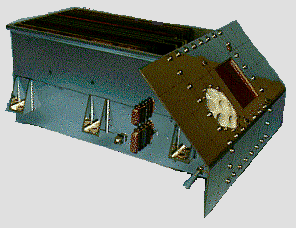|
|
The Solar and Heliospheric Observatory
SoHO
(more SoHO pages) satellite is a
joint space program of the European Space Agency and
NASA for studying the structure, chemical
composition, and dynamics of the Sun, solar atmosphere, and the solar wind.
The spacecraft was successfully launched on 2nd of December 1995 at
Kennedy Space Center by
Atlas-IIAS (Atlas/Centaur) launch vehicle.
The commissioning phase verified that all twelve scientific instruments work well.
The coordinated effort to study the Sun and its impact on Earth has thus been
started. The flight will last at least two years, until April 1998.
One of the scientific instruments of SOHO is the energetic particle instrument
ERNE (Energetic and Relativistic Nuclei and Electron) of the University of Turku.
The energy eruptions in the solar atmosphere
can lead to the acceleration of local gas particles to extremely high energies
and their injection into the interplanetary space. These fast moving streams
of particles are recorded by ERNE. At times, when there is no energetic
particle production at the Sun, ERNE is observing the continuous flux of
energetic particles from Milky Way (galactic cosmic rays) , and from the
boundary of the heliosphere accelerated by the termination shock (anomalous
cosmic rays). The two particle experiments of SOHO, COSTEP and ERNE, are
carried out in the CEPAC collaboration.
Description of the ERNE instrument
 ERNE Sensor Unit (ESU) (in photo right) has
two energetic particle sensors:
LED (the white one on
left) and HED (the
dark square on right). Further, all analog and digital electronics as well
as the Data Processing Unit (ESU-DPU) of
these sensors are within this unit.
ERNE Sensor Unit (ESU) (in photo right) has
two energetic particle sensors:
LED (the white one on
left) and HED (the
dark square on right). Further, all analog and digital electronics as well
as the Data Processing Unit (ESU-DPU) of
these sensors are within this unit.
ERNE will investigate the solar atmosphere by detecting charged particles produced in
various solar energy release processes.
The scientific objectives of the experiment are:
- energy spectra of ions and electrons above 1 MeV/nucleon
- elemental and isotopic abundance H to Fe
- particle acceleration in the solar atmosphere and interplanetary shocks
- particle propagation in the solar corona and in the interplanetary space
- study both large and small scale properties of the IMF
- short-period temporal variations of particle flux
- flux anisotropy within the apparatus viewing cone
- flux of protons penetrating the instrument (even decay solar neutrons)
ERNE will undertake the first systematic survey of
Solar Energetic Particle
(SEP) isotopic abundance, with high sensitivity, high resolution sensors which
cover a broad energy range. The gathering power is sufficient to determine isotope
abundance not only of major species C, O, etc., but also to explore many minor
(odd atomic number) ones as well.
|
|

